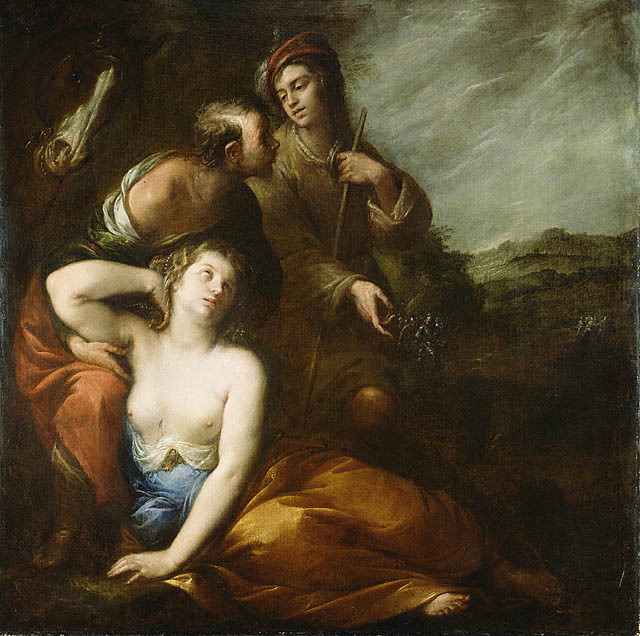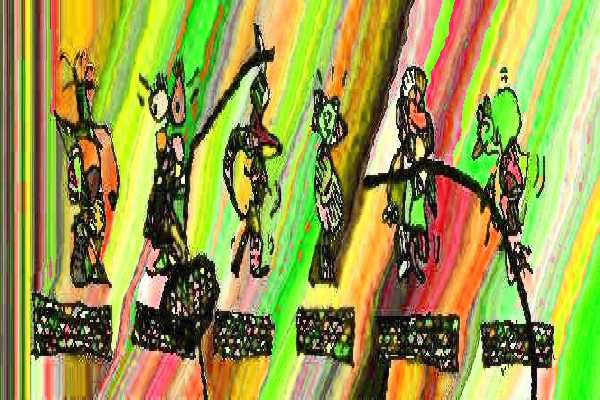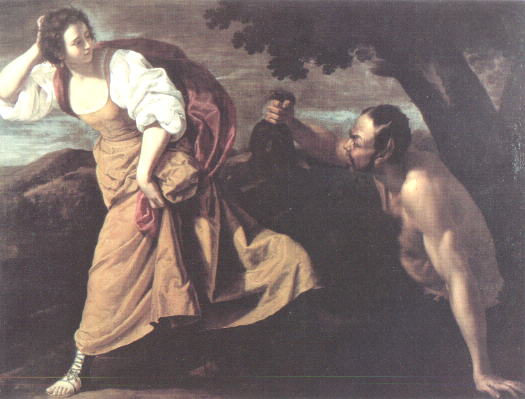

Presented (~40 minutes of excerpts) as:
composer Dan Plonsey's
New Langton Arts "Award Show"
Tickets are $8 general, $6 members, students, and seniors.
New Langton Arts is located at 1246 Folsom Street (between 8th and 9th streets) in
San Francisco.
For more information or reservations, call 415 626 5416.
The libretto (here as a PDF file)
AMARAMA is an opera I'm writing with New Hampshire-based librettist Paul Schick. It's based on a late-sixteenth century play "Il pastor fido" by Giovanni Battista Guarini, and its English translation to "The Faithfull Shepherd" by Sir Richard Fanshaw, 1647. (It is also the first in a series of "The Playback Operas of El Cerrito.")
"Il pastor fido" ("The Faithful Shepherd") tells the story of a collection of mismatched lovers, who are caught up in entanglements with each other, their elders, and even the gods. Specifically, the wrath of Diana has been directed at bucolic Arcadia: once upon a time, one of her devotees was spurned by his partner, and each year an unfaithful woman must be sacrificed to Diana, lest she let loose a plague. The plot hinges on an attempt by the elders to appease Diana once and for all by the marriage of a young man (Silvio) and woman (Amarillis) who are descended from the gods (Hercules and Pan), but she loves another (Mirtillo), and Silvio loves only hunting - and his dog! - disdaining the affections of Dorinda, whose love for Silvio is such that she makes herself prey for his hunting! Into this mess comes a scheming woman (Corisca) who wants Mirtillo for herself, while Corisca's jilted satyr-friend chases after her... but the tragic misfiring of Corisca's schemes (and the timely intervention by a blind seer and a disgruntled poet) result in everything being set aright. Along the way each character presents his or her ideas of the nature and the power of Love... Which vision will prevail?
AMARAMA focuses upon these conflicting definitions, and especially love's penchant for causing confusion, disarray - and for then (magically and unreliably) setting things right. Though what's "right" is clearly unclear.
Each scene will be in two parts: 1) narration of the events of the scene, accompanied by sparse instrumental improvisation, 2) aria by one or two characters. The libretto (here as a PDF file) was assembled from four sources: (1) original Italian, (2) Fanshawe's 1647(?) translation, (3) Italian spell-checked into English (suitably altered by Paul, modifying and changing vocabulary to meet our needs better, eliminating redundancies, unnecessary words, etc., also incorporating some of an English translation different from that of Fanshaw), and (4) some of an earlier treatment by Paul called ``Tear.'' This seeming hodge-podge of linear sense-challenged but eerily evocative lyrics are intended to mesh with the music to convey a sense of that which almost makes sense, which may or may not resolve.

"Silvio, Dorinda, and Linco (?)" Carlo Francesco Nuvolone Italian, Milan, about 1650 Oil on canvas 68 x 68 1/2
To further disturb things, the actors will only lip-sync the arias. The real singers willsing from the side (visible to the audience) as though in a recording booth with headphones, mic, music stand. This evokes the process of dubbing, or "playback" recording, as practiced in Bollywood cinema. (For many decades, two sisters and a handful of male singers recorded the majority of all Hindi movie songs!) The actrors will lip-sync for each other.
The music itself is very loosely based upon Bollywood film from the "Golden Age" (late-40's - mid-60's), in which a mixture of Western and Indian instruments are used to create relatively Westernized accompaniments for melodies often derived from Indian folk musics from all areas of the sub-continent.
One of the main themes of AMARAMA is that of disturbance, dislocation and discontinuity. At first Paul envisaged the opera being set in California in the 60's, with an imaginary earthquake tearing the play into two halves with a missing bit in the middle destroying continuity and any sense of causality (we have no idea how the romantic problems of the first half are resolved to their state in the second half). As the opera has evolved, this idea has been expanded to include other sorts of discontinuity and dislocation: in the deliberately clumsy attempts to bridge the gap between English and Italian, in the fragmented structure of each scene, in the disassociation of each actress with her voice, the dislocation of action from Europe of centuries ago to both California and India of the early 60s.
Of course events of today - the possibility of war between India and Pakistan - represent a further disruption - one which we whole-heartedly hope may be averted! The early history of Indian musical film - which represents the mainstream of Indian film - is marked by the disastrous partitioning of India and Pakistan. Some singers, composers, directors went to one side, some to the other, just as families were divided.
AMARAMA takes its name from a mis-translation of the principal female character Amaryllis, and also from "amor" combined with the name of the Hindu god Rama, to whom Thyagaraja, greatest of Karnatic composer-saints, was devoted. Many people in India, Thyagaraja among them, devote themselves to the worship of all gods through a single god - that is, they accept both a universality of all life, but recognize that for the individual, contemplation of just one aspect of life is more than enough. (It is with this quality of devotion (faithfulness) that our work is concerned, not the particular name or character of any god.) AMARAMA: Rama coming and going, forwards and backwards: through contemplation of disruption and lack of faith we come to awareness of that which is not disruptable, and in which faith cannot be denied.
Or something like that.

"Corsica & Satyr" Artemisia Gentileschi (1593-c.1652).
CONTACT
Send email to: Dan Plonsey.
RELATED MATERIAL